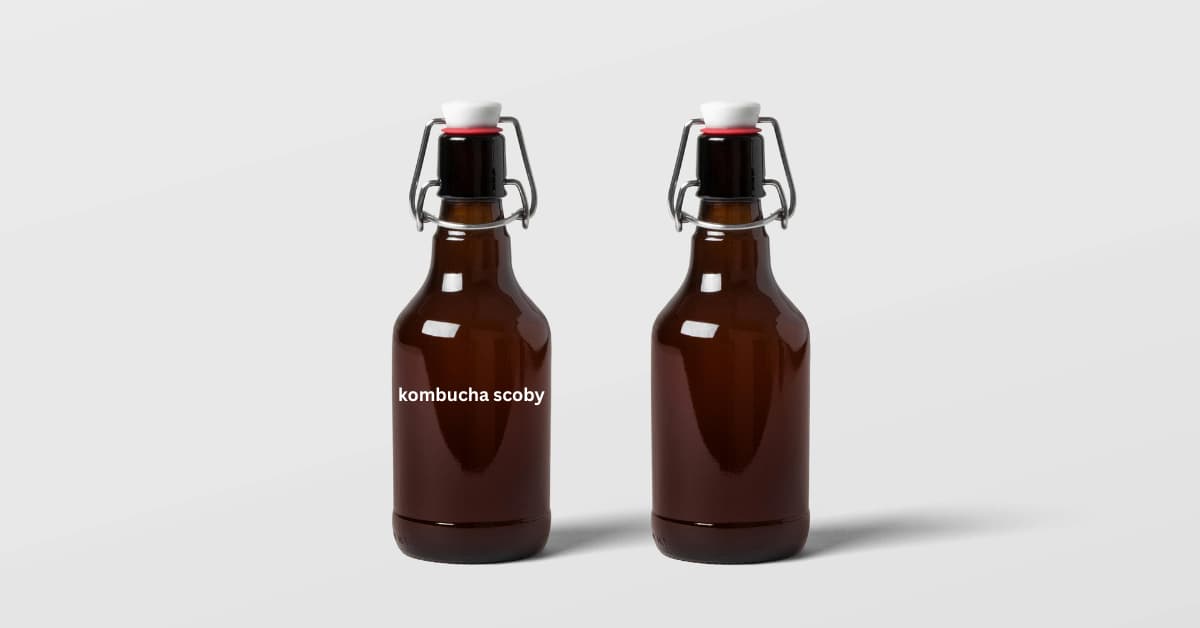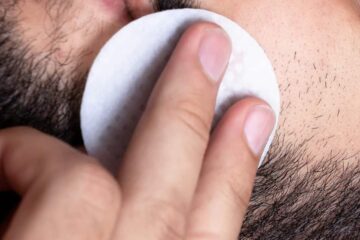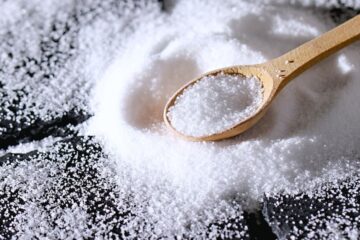Table of Contents
Introduction
Kombucha is a fermented liquid with a unique flavor and substantial health benefits.
Though it’s widely obtainable at grocery stores and health food shops, you can use tea, sugar, and a SCOBY.
A SCOBY is a dense, elastic, and cloudy mass that helps fermentation.
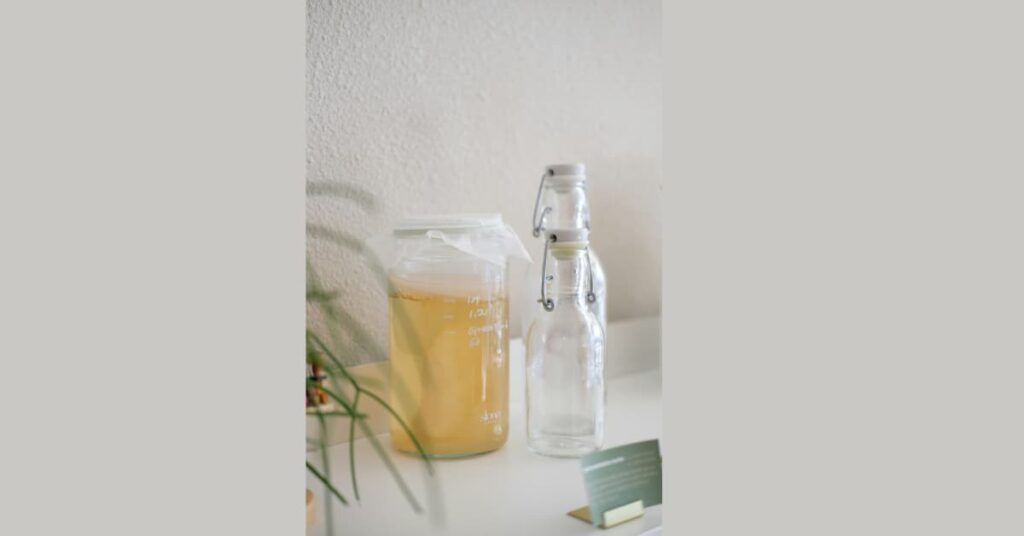
kombucha scoby
The kombucha SCOBY is the elemental component and complex culture accountable for changing sweetened tea into the tangy, probiotic drink. Standing for Symbiotic Culture of Bacteria & Yeast, the SCOBY is the entire living microbial assembly in the liquid starter. Still, it is most recognizable as the dense, elastic, pancake-shaped pellicle that forms on the character of the brew. This pellicle is a biofilm produced mostly of bacterial cellulose, which houses the microbes and is a protective barrier against pollutants. During fermentation, the yeast element consumes the sugar to produce alcohol and carbon dioxide. In distinction, the bacteria break down the drink to make organic acids, such as acetic acid, which provides kombucha its distinct tartness and health benefits.
Scoby
SCOBY standing for “symbiotic culture of bacteria & yeast.” It’s an ingredient utilized in the fermentation of kombucha. You can buy SCOBY from the store or even create your own so that you may make kombucha.
A SCOBY, or Symbiotic Culture of Bacteria & Yeast, is the fermentation starter which kicks off kombucha fermentation. It is composed of lactic acid bacteria, acetic acid bacteria, and yeast. The SCOBY makes your favorite kombucha beverages with delicious flavors and healthy benefits.

What is a SCOBY Made Of? Breaking It Down
Glancing at the acronym to explore its fundamental ingredients can help us respond to the question of what a SCOBY is made of.
Symbiotic: An interaction between two organisms living in close physical association. A symbiotic relationship typically means that both organisms work jointly in harmony, delivering benefits for both. The symbiotic elements in the SCOBY are carefully chosen for their positive connection and the fact that they will create on one another to produce the expected reaction: in this issue, the fermentation method and its advantages.
Culture: The development of microorganisms (in the case of kombucha, microorganisms contain yeast and bacteria) in a detailed medium. In a SCOBY, the culture has the lowest set of microorganisms identified in kombucha medicine. A kombucha civilization is necessary for the healthy development of microorganisms.
Bacteria: Kombucha relies on various healthy bacteria specifically chosen to assist fermentation. The bacteria located in kombucha generally contain Lactobacillus nagelii, Gluconace tobacter, Gluconobacter, and Komagataeibacter, but numerous others can be present. These probiotics can present several potential fitness advantages, including enhancing gut health in individuals who regularly drink kombucha.
Yeast: The definitive critical element in a kombucha SCOBY is yeast, the fermenting component that assists in breaking down the sugars in the kombucha mixture. The yeast in kombucha can also help build overall gut health.
What Does a SCOBY Look Like?
You’ll likely find “bits of stuff” swimming if you peek into any natural kombucha bottle. These bits are little pieces of the SCOBY, meaning your kombucha is alive and has active cultures. It’s completely safe to drink and is one of the special characteristics of kombucha.
During fermentation, the SCOBY is additionally obvious. As the fermentation progresses, the SCOBY develops into a dense, elastic, jelly-like, cloudy mass that smells like vinegar. It may appear strange, but it’s a good sign that the kombucha is fermenting just how it should.
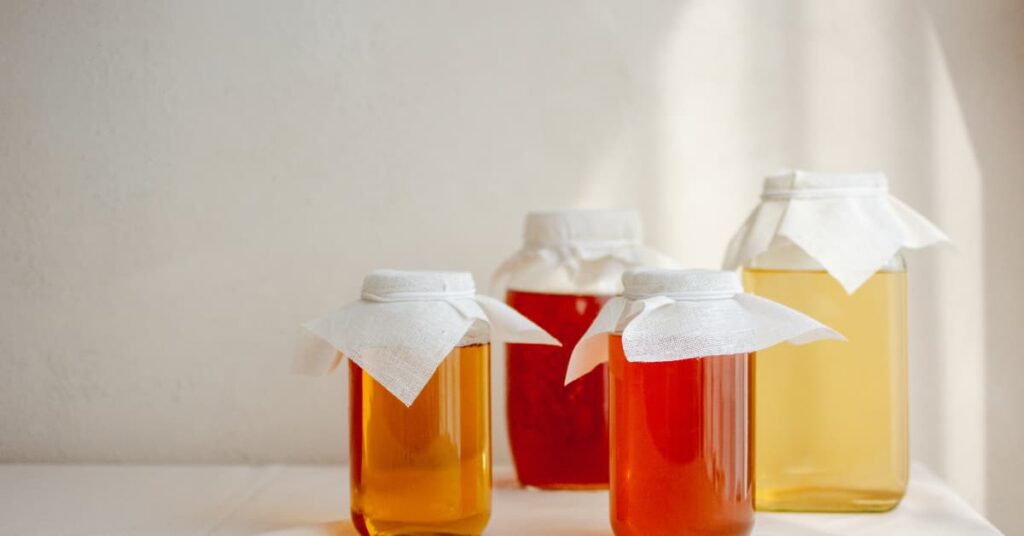
Kombucha scoby benefits
The kombucha SCOBY (Symbiotic Culture of Bacteria & Yeast) is the physical cellulose mat that accommodates the microbial community. When focusing primarily on the health advantages of consuming the pellicle rather than the liquid kombucha, the benefits are mainly derived from its high fiber content and the acids it retains.
Here are 12 points describing the health advantages and properties of the consumed SCOBY pellicle:
Direct Health and Nutritional Benefits (When Consumed)
- Source of Insoluble Dietary Fiber: The pellicle is comprised primarily of bacterial cellulose, a form of insoluble fiber undigested by humans.
- Supports Bowel Regularity: The high insoluble fiber content supplies bulk to stools, especially aiding gut motility and preventing or relieving constipation.
- Potential Constipation Relief: Studies indicate that the culture’s mechanical and chemical composition (fiber plus acids) may encourage more regular and softer stools.
- Delivers Live Probiotic Cultures: The cellulose matrix is a highly focused habitat for the beneficial Acetobacter bacteria and yeasts, providing a direct amount of living microbes to the digestive system.
- Aids in Cholesterol Management: Insoluble fiber, like that in the SCOBY, is understood to assist in lowering cholesterol levels by attaching to excess cholesterol in the digestive tract.
- Slows Sugar Absorption: The fibrous character of the pellicle slows the rate at which sugars are absorbed into the bloodstream, contributing to more steady blood sugar levels.
- Contains Glucuronic Acid: The pellicle retains organic acids like glucuronic acid, which is mentioned for its role in the liver’s natural detoxification methods (though this needs more human research).
- Acts as a Prebiotic Source: The cellulose fiber is a food source for advantageous bacteria in the lower gut, working as a prebiotic to improve the gut microbiome.
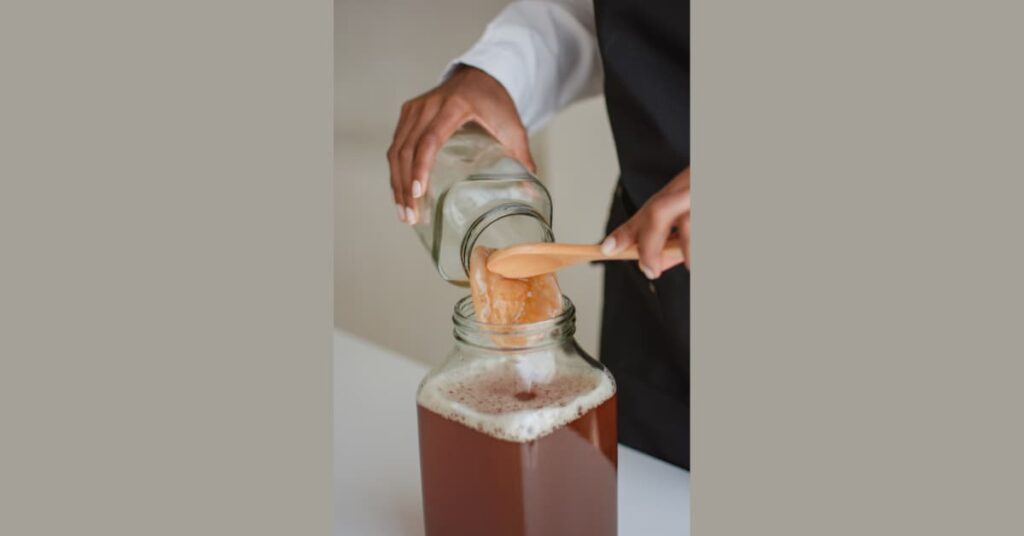
Research and Supportive Benefits (Biological/Topical)
- Potential for Wound Healing: The pure bacterial cellulose of the pellicle has exceptional structural properties and is actively investigated for its use as a positively effective sterile biological dressing for wounds and burns.
- Rich in Trace Minerals: Due to the metabolic actions of the microbes and the absorption from the tea base, the SCOBY includes trace quantities of minerals like iron, zinc, manganese, and copper.
- Anti-Inflammatory Properties (Mechanistic): The organic acids and polyphenols within the pellicle and covering liquid are associated with powerful antioxidant and anti-inflammatory movements, influencing multiple molecular pathways.
- High Purity Biofilm: The bacterial cellulose produced by the SCOBY is purer and structurally more powerful than plant-derived cellulose, creating it a beneficial subject for developing new applications in food science and biomedicine.
Recipe
Key Ingredients to Make a Scoby
- Kombucha: You can use home-made kombucha from a friend or store-bought kombucha, but make sure it’s a raw, unflavored type. It also allows one to see one of those little blobby things swimming at the top or bottom of the bottle.
- Black tea: Plain black tea is the most valuable and nutritious tea for scoby growth. For this step of developing a new kombucha, use black tea if possible; you can play about with other teas once you start creating kombucha regularly.
- Sugar: Scobys form best if you use plain, granular table sugar. Organic sugar is fine, but avoid alternative sugars or honey.
How to Make a Scoby
- Make the tea. Bring the water to a boil. Remove the utensil from the heat & stir in the granulated sugar until completely dissolved. Add the black tea and let it steep until it cools to room temperature. Remove and discard the tea bags.
- Pour the cooled tea and kombucha into a large jar. Pour the sweet tea into the jar. Pour the unflavored, unpasteurized store-bought kombucha on top. If you notice a blobby “baby scoby” at the bottom of the commercial kombucha jar, ensure this is transferred. Stir to combine.
- Cover and store. Cover the mouth of the jar with some layers of tightly-woven cloth, coffee filters, or paper towels secured with a rubber band. Place the jar at an average room temperature (70°F), out of direct sunlight, and where it won’t get jostled. Sunlight can prevent the kombucha from fermenting and the scoby from forming, so wrap the jar in a cloth if you can’t keep it away from sunlight. Cover and store for 1 to 4 weeks.
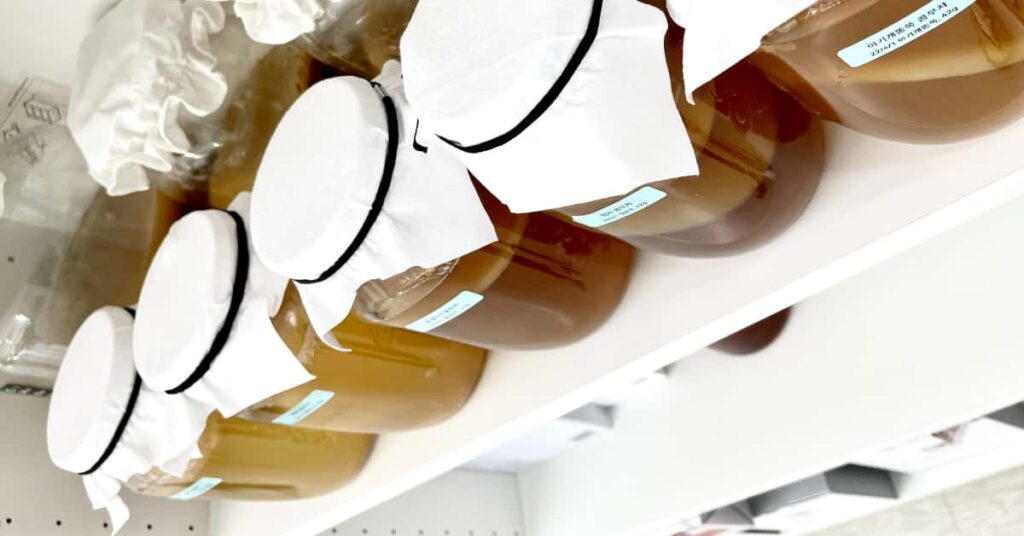
Kombucha scoby uses
It is primarily used for brewing more kombucha, but its uses extend to creating various foods, such as jerky, smoothies, and fruit leather. Other uses include applying it to skin for burns and wounds, adding it to garden soil, and even using its cellulose for industrial applications like vegan leather and circuit boards.
Conclusion
The Kombucha SCOBY (Symbiotic Culture of Bacteria & Yeast) is the remarkable, gelatinous cellulose pellicle biological engine for kombucha production. Far from being just a byproduct, the SCOBY is essential, acting as a living matrix that facilitates fermentation and protects the brew. When consumed, the pellicle is valued primarily as a dense source of insoluble dietary fiber and a highly concentrated vehicle for delivering live probiotic cultures and organic acids, which promote gut motility, assist in regular bowel movements, and contribute to overall digestive health. Beyond consumption, its unique structure—pure bacterial cellulose—is a subject of promising research for applications in biomedical fields like wound dressing, solidifying the SCOBY’s role as a versatile and functional bio-material.

